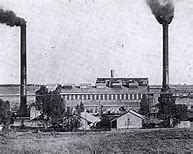THE HISTORY OF THE STEAM LOCOMOTIVES


FORWARD BY DR IAN McRAE
INDEX
- Forward by Dr Ian McRae
- Abbrevations Used
- Details of the ESCOM Locomotives
- Locomotive Manufacturers
- Brief History
- Avonside – 1927
- Brakpan – 1896
- History of the Fireless Locomotives
- Congella – 1946
- Crane – 1911
- Dubs – 1892
- ESCOM – 1937
- Fireless – 1942
- Henschel – 1950
- Hunslet – 1902
- Kitson – 1913
- Komati – 1926
- Kracht – 1897
- La Moye – 1907
- Pieter Both – 1897
- Roos – 1893
- Salt River – 1953
- Stephenson – 1952
- Tsitsa – 1927
- Tugela – 1935
- Umbilo – 1893
- Umgeni – 1951
- Volta – 1904
- The end of the steam locomotive in Eskom
Abbrevations Used
Victoria Falls and Transvaal Power Company 1913-1948
The VFP was established in Rhodesia in 1906 as the Victoria Falls Power Company with the intention of supplying power to the Witwatersrand mines from the Victoria Falls. The falls idea was abandoned on 1909 and the VFP became the Victoria Falls and Transvaal Power Company which then proceeded to erect coal fired power stations in the Transvaal, three being on the East Rand and one in Vereeniging. In partnership with ESCOM the VFP built and operated three large power stations, all of which mainly served the Witwatersrand gold mines. The VFP was taken over by ESCOM in 1948. The VFP purchased “C” class locomotive No 62 from the SAR in 1913. This locomotive, now known as the Kitson, was used to haul coal trains from Modrea station to Brapkpan power station to Rosherville power station (1920-1948).
Rand Central Electric Works
In 1894 Siemens and Halske (one of the world’s leaders in the manufacture of electrical equipment) obtained a concession for the ZAR (Zuid-Afrikaansche Republiek) Government for the generation and transmission of electricity to the gold mines of the Witwatersrand. In 1895 this concession was ceded to the Rand Central Electric Works who proceeded to erect a power station at what is now the town of Brakpan. This was the first commercial power supply undertaking in South Africa. The RCEW was taken over by the VFP in 1906. The latter then erected a large new power station on the site which became operational in 1907
South African Railways 1910 -1913
Established in 1910 when the Union of South Africa was formed. The CSAR, the CGR and the NGR were merged into a single railway system. The three systems functioned separately until they were finally consolidated in 1914. The name of the SAR was changed to S A Transport Services (SATS) on 1 April 1981 whilst SATS was privatised on 1 April 1991 becoming TRANSNET with a subsidiary, SPOORNET which operates the rail network and METRO being another subsidiary which operates the various suburban assenger services. The SAR changed the K&S class into the “C” class and renumbered the locomotives 47 to 62. The “C” class locomotives were used mainly for harbour shunting.
Electricity Supply Commission 1948 – 1983
Established in 1923 as a public utility corporation. ESCOM took over the VFP in 1948, and continued using the Kitson locomotive at Rosherville power station. When the power station was closed in 1966, she carried on hauling light loads between Jupiter station and ESCOM’s central workshops at Rosherville. ESCOM reinstated the locomotive’s original NGR number (No 13) and christened her “Kitty”.
Central South African Railways – CSAR
Established in 1902 to take over from the IMR (Imperial Military Railway). Became part of the SAR in 1910.
South African Rail and Steam Museum – SANRASM
In 1962 a group of steam train enthusiasts formed the Railway Society of Southern Africa (RSSA) with the objective of promoting an interest in steam trains and the gathering of historical data in connection therewith. With the demise of steam in the 1970’s a group was formed with the objective of ensuring that a representative collection of railway equipment is preserved for posterity. This branch of the RSSA called themselves the Preservation Group, but with the acquisition of a large collection of railway memorabilia it was found necessary to create a separate body to keep these in trust. Thus the South African National Railway and Steam Museum was formed, sited at Krugersdorp. Similar bodies were formed elsewhere namely the Umgeni Steam Railway Trust based at Hilton and the Cape Western Railway Trust based at Cape Town. The old SAR established the Transnet Heritage Foundation to look after its collection.
Natal Government Railways (NGR)
Locomotive No 13 is one of seven locomotives built by Kitson & Co in 1879 for the main line service of the NGR. They were the first locomotives n South Africa with the 4-6-0 wheel arrangement and the most powerful in service until 1888. Renumbered 47 at some stage.
National Monument
In 1979 Kitty became the first steam loco South Africa to have completed a century of continuous service. In 1983 it was the oldest working steam locomotive in South Africa. For these reasons ESCOM, together with the National Monuments Commission, decided to declare this unique machine a National Monuments Commission, decided to declare this unique machine a national monument on 29 April 1983. It is the first moveable, working machine to receive this distinction.
DETAILS OF ESCOM STEAM LOCOMOTIVES
LOCOMOTIVE MANUFACTURERS
- A Barclay, Sons & Co – La Moye, Congella & Fireless
- A Borzig - Tsitsa
- Avonside Engineering Co. – Avonside
- Brooks Locomotive Company – Brakpan
- Dubs & Co – Dubs, Umbilo
- Emil Kessler – Pieter Both & Roos
- Henschel & Sohn – Vierfontein
- Hudswell, Clarke & Co - Komati
- Hunslet Engineering Co - Hunslet
- J A Maffei – Volta
- Kitson & Co – Kitson “Kitty”
- Manning Wardle & Co - Crane
- R Stephenson & Hawthorn – Umgeni & Stephenson
- R W Hawthorne, Leslie & Co – Tugela
- W G Bagnall & Co – ESCOM & Salt River
BRIEF HISTORY

The Victoria Falls and Transvaal Power Company (VFP) was established in 1906 and the Rand Mines Power Supply Company (RMPS) in 1908. Their primary objective was to supply electricity to the gold mines of the Witwatersrand. However, the very first commercial undertaking to supply electricity to the gold mines was the Rand Central Electric Works (RCEW) which was established in 1895. RCEW built a power station at what is now the town of Brakpan. It was at Brakpan that the very first steam locomotive connected with the electricity supply industry of South Africa saw service. No details of this locomotive are known. The locomotive, with 20 trucks was shipped from Europe in 1897 and was used to transport coal from a nearby colliery to the power station. In 1904 the RCEW acquired a second locomotive which came to be known as Volta. Trains hauling coal were brought by the railways to points near the power stations. Each power station was then responsible for the haulage of the coal trucks to its coal staithes. Eight steam locomotives were obtained by the VFP for this purpose between the years 1910 and 1924.
In 1919 the South African Railways and Harbours Administration (SAR&H) had decided to electrify the Natal main line as well as the Cape Peninsula suburban lines. The absence of an electricity supply to these areas caused the SAR to provide for its own power stations. Consequently, the SAR commenced with the construction of a power station at Colenso in 1922. When the Electricity Supply Commission (ESCOM), (named changed to Eskom in 1987) was established in 1923, it was arranged with the SAR that ESCOM would acquire the Colenso power station upon its completion. Furthermore, it was arranged that ESCOM would build power stations at Durban and Cape Town, mainly for supplying power to the railways. Colenso power station was taken over in 1927. Congella, in Durban, and Salt River, THE FIRST LOCOMOTIVE AND TRUCKS OF THE RAND CENTRAL ELECTRIC WORKS 10 in Cape Town, both came into operation in 1928. ESCOM acquired steam locomotives to transport coal to these power stations. But why all the fuss and bother about old steam locomotives, or for that matter, about any of these noisy and smelly old things? Perhaps Gordon Watson who spent a lifetime working with them, came cose to the answer when he wrote a short article under the title “The Romance of Steam” in which he says the following:- “In the realm of sound the steam locomotive possesses attributes which have the power to stir the souls of men. The rhythmic beat of the exhaust is the basis of music, its tempo denotes urgency, power, brutality when working hard; contenement tranquillity and even ethargy when running easily. Men have spent months of patient work to provide it with a warning cry which is at once penetrating, melodious, characteristic. It has become the most widey recognised sound in the world. The men who work with steam locomotives and indeed many who do not, have often endowed the machine with human attributes. Experienced and completely normal locomotive men may be heard talking to their engines in a manner that makes the uninformed observer question their sanity. But it is these men who, by being one with the machine, have demonstrated time and again that the steam locomotive is capable of almost incredible feats of power and performance when it is understood and sensitively handled. But, as with the introduction of modern machines which always have the maximum power available at the mere fick of a simple ever and therefore no longer requires to be “nursed” before making some extra demand of it, so it is that as from that time the human feeling towards these machines has gone for ever.” There is no doubt that these little steam locomotives stirred many souls in a very modest way.
